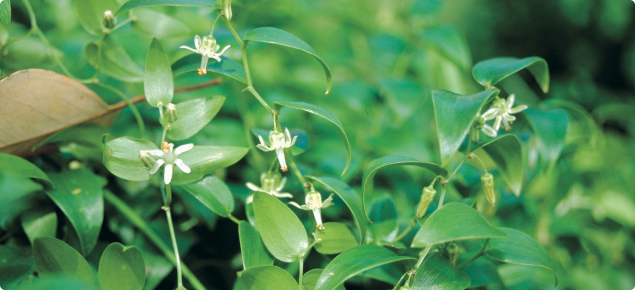Information about this pest can be found on the bridal creeper: declared pest page.
Chemical requirements
When using any agricultural chemicals please ensure that you always follow instructions on the label and any permit. Users of agricultural chemical products must always strictly comply with the directions on the label and the conditions of any permit. To view permits or product labels go to the Australian Pesticides and Veterinary Medicines Authority website.
Chemical control options
Chemical control options can be found below. For other methods of control please refer to the aquatic weed control page, and the declared plant control handbook.
Recommended herbicides |
|
| Herbicide: Metsulfuron (Group B) (various trade names: see APVMA link) | |
| Active ingredient | 600g/kg metsulfuron methyl |
| Rate of product/10L water |
|
| Time of application | Mid–June to late August. Follow up treatment required for a couple of seasons. |
| Wetting agent | Pulse at 2mL/L |
| Remarks |
|
| Herbicide: Glyphosate (Group M) (various trade names: see APVMA link) | |
| Active ingredient | Glyphosate 360g/L |
| Rate of product | 1:2 parts with water. Apply directly to plant using a sponge glove. While this is very selective method it is very slow to apply and is very slow to act in the plant. Retreatment will be necessary. |


